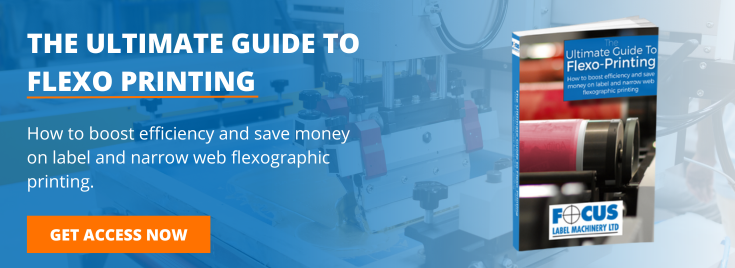
The Flexographic printing process offers businesses many benefits, not the least of which is significant cost savings when doing medium to large print runs. However a modern flexo press equally it also has the ability to handle short, medium and high output levels, this printing process can accomplish small or large jobs be that in single colour or in multiple colours.
How does a flexographic printing machine accomplish such a high level of quality so cost-effectively and in such a short amount of time? It can do so because of the following robust, high-performance components.
Key Components For Ink Distribution
In modern flexo systems only one or two rollers are involved with the actual distribution of ink during flexographic process: the fountain roller and the anilox roller.
The fountain roller is responsible for transferring the ink from the ink pan in the machine to the anilox roller. The anilox roller’s job is to meter the ink in such a way as to achieve uniform ink thickness on the material being printed. The anilox roller has a unique construction that consists of a series of engraved cells. Each cell carries a particular amount of ink to be distributed.
To prevent ink build-up, a doctor blade may be installed. Its job is to ensure that no ink is transferred beyond that contained in the cells of the anilox roller. The blade scrapes the roller to remove excess ink, and is made of a precision polymer or polished hardened steel material with a bevelled edge.
Key Components For Ink Application
Ink travels from the anilox roller onto a second cylinder called the Print cylinder which carries a flexible polymer printing plate, which is responsible for the transfer of the image to the substrate. The substrate is carried on an impression cylinder which presses the material against the printing cylinder and transfers the desired image.
The adhesive tape used to hold the polymer plate in place is double-sided and precision engineered. Consisting of several layers of material, including release liner, reinforcement film and compressible foam, the tape’s tack is incredibly important, as this property will determine how well the tape holds the plate in place, as well as how easy it will be to remove at the end of a printing job.
The technology of flexo printing plates have made great strides forward that have ensured that today Flexo is the preferred choice of production. No greater advance came from the change from rubber printing plates to photopolymer plate technology which allowed higher resolution to be achieved challenging offset & letterpress quality.
Crucial Press Parts
Flexographic machines can produce large volumes of high-quality print due to their capability to precisely control roll web tension through the press, print many colours at high speed and dry Inks efficiently without affecting the product.
The infeed, unwind & outfeed, rewind section of these machines are strictly controlled with closed loop tension systems and perform irrespective of the substrate type or thickness. These systems can handle films down to 30 microns up to 350 gsm board.
Print modules need to be robust to ensure vibration is not transmitted through to print, the components used consisting of impression, plate, anilox and fountain rolls, is crucial to print quality. The drying systems must be isolated so heat & light does not affect the immediate point of printing or Inks held within, and at the same time they should be efficient in drying inks at high speed and controlled at lower speeds so not to affect the substrate.
The five types of ink able for use in flexographic printing – Chemical curing, UV curing, electron beam curing, water-based and solvent-based inks – can also ensure short drying times.
Flexographic Printing Press Types
There are three main types of flexographic printing press, each with their own unique advantages.
- The in-line press sees colour stations being horizontally placed so that printing can occur on both sides of the substrate with the help of a turn bar. In-line flexographic presses offer the ability to print on heavier substrates. These presses can run at very high speeds. The more colours/processes the longer the press, thus these machine can have a large footprint.
- The central impression press’s colours are arranged in a circle/ satellite around the large central impression cylinder. It is possible to print on both sides of the substrate, although this can restrict the available printing width, its main advantage is excellent print stability & quality in the form of colour and clarity. These machines are relatively compact for their high capability.
- The stack press’s colour stations are vertically stacked, which allows operators easy access. Stack presses can print on both sides of a substrate. Stack presses have a small footprint, but access to top & lower print stations can be difficult, but this is the compromise.
It is due to the interplay of the components mentioned above that flexographic printing offers a level of versatility that so few other printing types can match.
Find Out More About Flexo-Printing
If you would like to find out more about flexo-printing and how it is used in industry, download our new Ultimate Guide to Flexo-Printing. Written by our team here at Focus, the guide is based on our many years’ experience designing, installing and maintaining high-quality print machines for various sectors.







